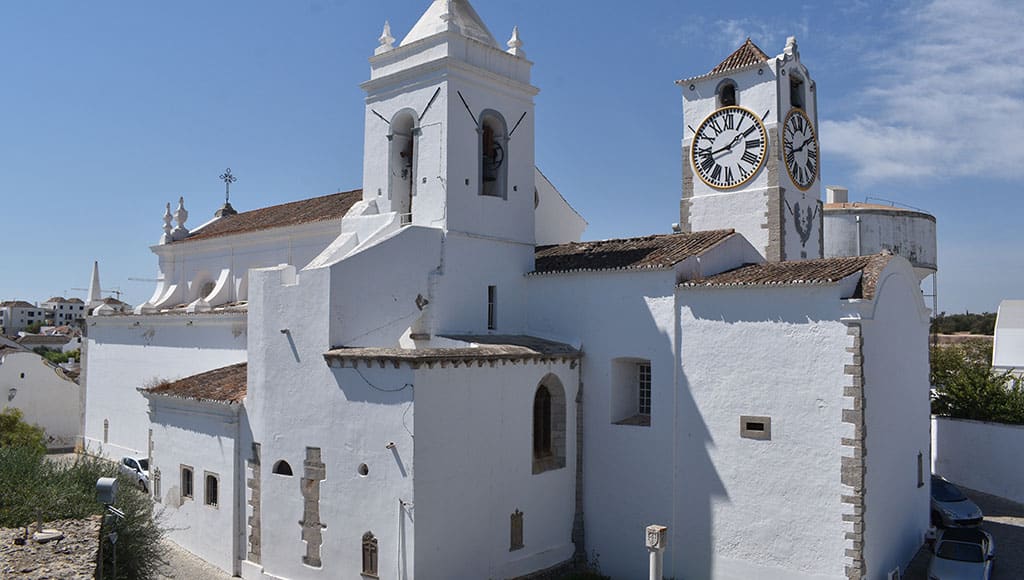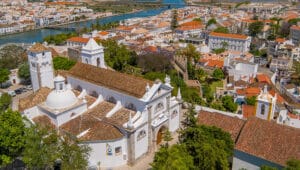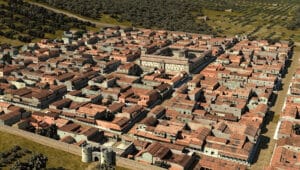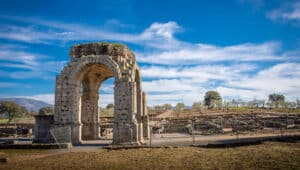The churches of Tavira
Although most towns and villages in the Middle Ages in Europe possessed only one church for every parish, in contrast to other Portuguese towns of a similar size, Tavira possesses an enormous number of religious buildings. Tavira’s many churches and chapels reflect the immense importance of this town in the history of medieval Portugal.
An important Portuguese historian, Vítor Serrão, wrote in 1993: “The town of Tavira was the largest urban centre in the Algarve, and within the context of the province, it achieved a position of clear economic and strategic importance. This position was reflected in the decorations of the many religious buildings in the town.”
During the early Middle Ages, Tavira was the sixth largest town in the whole of Portugal, and it was by some distance the largest town in the Algarve until after the Great Earthquake of 1755. In the early 16th century, the town of Tavira was almost as big as it is today.
After its conquest from the Moors in 1242 by the knights of the Order of Santiago led by D. Paio Pires Correia, Tavira occupied a position on the frontier between Christian Portugal and Moslem Africa. During the years 1415-1769, Portugal had a seaboard empire in Morocco, and Tavira provided an important link with the Portuguese outposts on the African coast.
There was a great deal of traffic of aristocrats, soldiers, sailors and supplies to the African fortresses, and many of those returning from Africa disembarked in Tavira. All this movement clearly provided wealth, and as men departing for war often devoted their thoughts to religious motives, much of their wealth probably went in the same direction.
When the Portuguese fortress of Arzila in Morocco was under attack in 1508, for example, the relief expedition assembled on the Atalaia plain in Tavira numbered over 25,000 men, and in thanksgiving for the survival of Arzila after that particular crisis, D. Manuel I founded in Tavira the Mosteiro da Nossa Senhora da Piedade, which is often referred to as the Bernardas.
In 1520, as a result of the continuing support given to the crown in the war effort in Morocco, the same king, D Manuel I, rewarded the town with the grant of the charter which raised it to the status of cidade. In his grant, D Manuel declared: “The town is always growing, it is home to many noblemen who are always ready to serve us with arms, men horses and ships”. 
Defining periods of history
During the later Roman Empire, and also during the Visigothic period, the whole of Hispania was considered to be Christian, although few Christian buildings survive from those times.
The Portuguese and Castilian invaders regarded the period of the Muslim or Moorish occupation as a temporary phenomenon, and historians later referred to their southward expansion as a re-conquest, because the invaders were reclaiming lands that were previously Christian.
Four different periods of the history of the town may be appreciated through its churches. During the first 150 years of the Christian kingdom, the new religion established itself through the destruction of mosques and the construction of new churches.
Secondly, the years of Portuguese imperialism in Morocco (1415-1769) gave a great impetus to the construction of chapels and churches in Tavira. Within this Moroccan period, Portugal briefly became extremely wealthy over two distinct short bursts; initially as a result of the spice trade (1500-c1580); and then as a result of the discovery of gold and diamonds in Brazil (1695-1750); some of this wealth percolated down to Tavira in the guise of religious building.
Thirdly, after the suppression of the religious orders of 1834, the town endured 160 years of decline, and many church buildings were neglected or even abandoned altogether.
Lastly, from about 1990, the town began to enjoy an economic revival because of its attraction to foreign retirees and its tourist potential. Taken together with the investment of EU funds, its prosperity has led to church restorations, although some of the restored church buildings now have other non-liturgical uses.
And how many churches are there?
The famous historian José Hermano de Saraiva wrote about Tavira in his Itinerário Português: O Tempo e A Alma (Portuguese Journey: the Time and the Soul)in1987:“They call it the town of churches and say there are 37 of them; I did not check the number; but the presence of the [churches] is surely of great importance to highlight the town’s lineage and evoke its past.”
A booklet produced by the Câmara of Tavira in 2008 illustrated 23 churches within Tavira county, acknowledging a further 11 by name only, showing 34 in total. Later, in 2010, the Câmara produced an attractive booklet (Tavira, Cidade das Igrejas; Tavira, Town of Churches), which counted 21 within the town. Those shown in the booklet include churches together with friaries, a convent, chapels and hermitages.
In his guide to Tavira of 1993, Valentino Galhardo wrote: “The urban landscape of present-day Tavira displays a remarkable number of towers and domes belonging to churches and convents, their silhouettes against the sky making up one of the town´s most characteristic features. No less than six convents, each with its own church, plus another 15 churches, or chapels, stand within the town’s limits, forming an impressive religious presence.”
Valentino Galhardo’s figures, therefore, bring his total also to 21.There is a substantial difference between the 37 of José Saraiva, and the 34 counted by Tavira Câmara, and the 21 acknowledged by Valentino Galhardo. And so, which of them is right?
The expression Tavira also has a number of different meanings. Where exactly are the boundaries of Tavira? It is the chief town of the municipality, or county of Tavira, and the town itself is limited by the main EN125 road and the Sítio do Vale de Caranguejo to the north and east, and to the west and south by the EN125 road and the salt pans of the Gilão estuary.
In the municipality or county of Tavira, there are nine parishes, and the two parishes of Santa Maria and Santiago cover the town itself, together with some countryside outside the smaller town boundary. Over time, these parishes have also changed in their size; for example, the Parish of Santiago used to include not only the fishing village of Santa Luzia but, until 1773, also the village of Moncarapacho; and in 1774, Cacela was detached from the Parish of Santa Maria.
And further, just what dates were these commentators referring to? Some churches no longer exist, but there are parts which remain and which we can identify. Some have disappeared altogether, but we know where they were, and roughly how long most of them existed; some we know of only because they are referred to in documents. And some religious buildings are now used for other purposes.
In their surveys, Galhardo and the Câmara count buildings which exist but have been deconsecrated. The Pousada da Graça in the old Convento de Nossa Senhora da Graça, for example, is counted among the churches, but the chapel of this convento was deconsecrated nearly 200 years ago.
Lastly, until recently, Portugal was largely Roman Catholic, and until the Carnation Revolution of 1974, it was unusual to find in this country churches of any other denomination. Nowadays, there are churches of different denominations in many parts of the town, and it is difficult to keep count of them. Their congregations do not usually build their own dedicated places of worship but are established in existing buildings.
The Portuguese language use of the word templo conveniently indicates any religious building which has an altar, and this survey will include parish churches, churches, chapels, monastery chapels, convent chapels, hermitages, oratories and even some privately-owned chapels, as well as those churches of recent foundation.
To be continued …

























